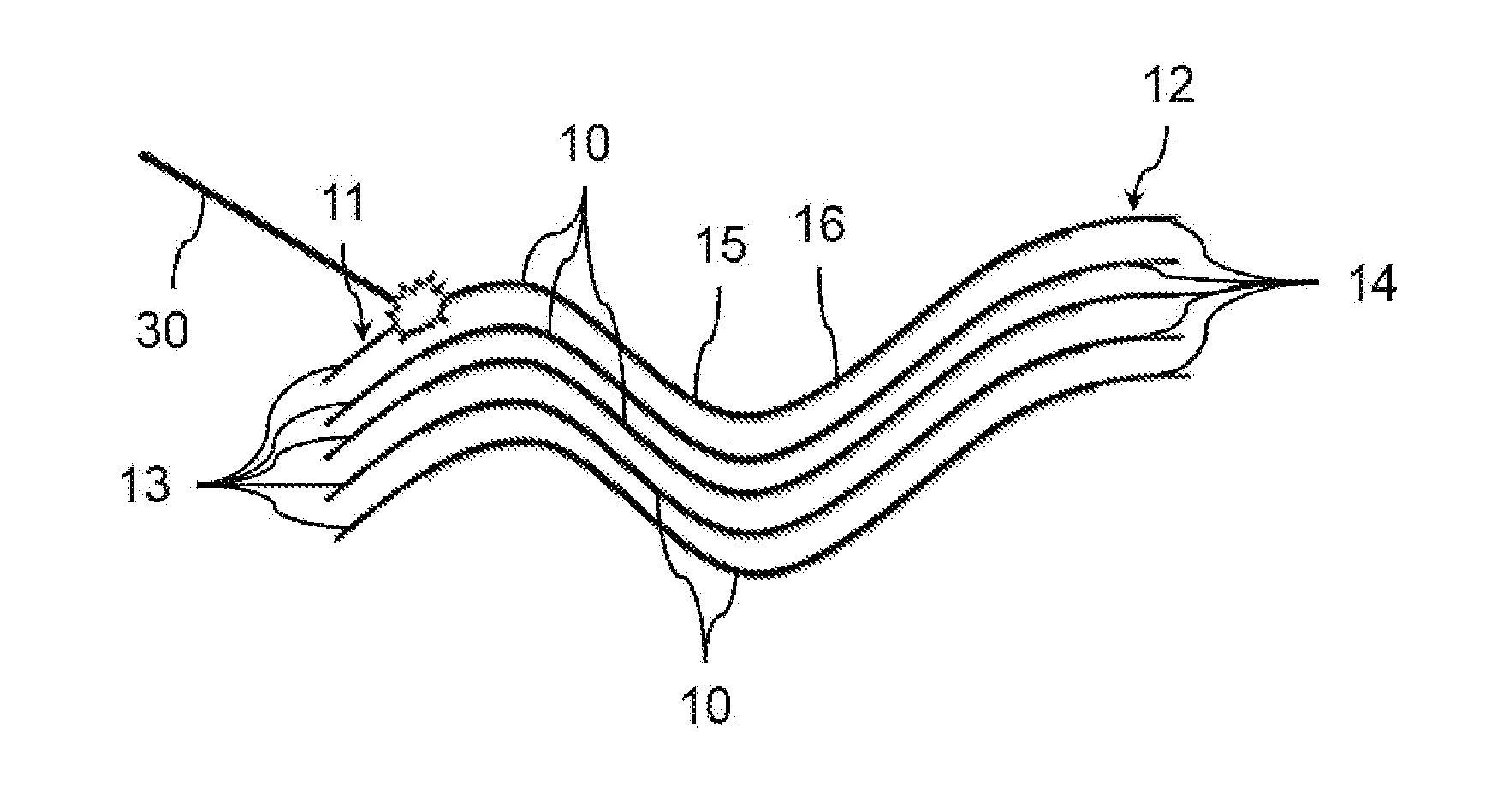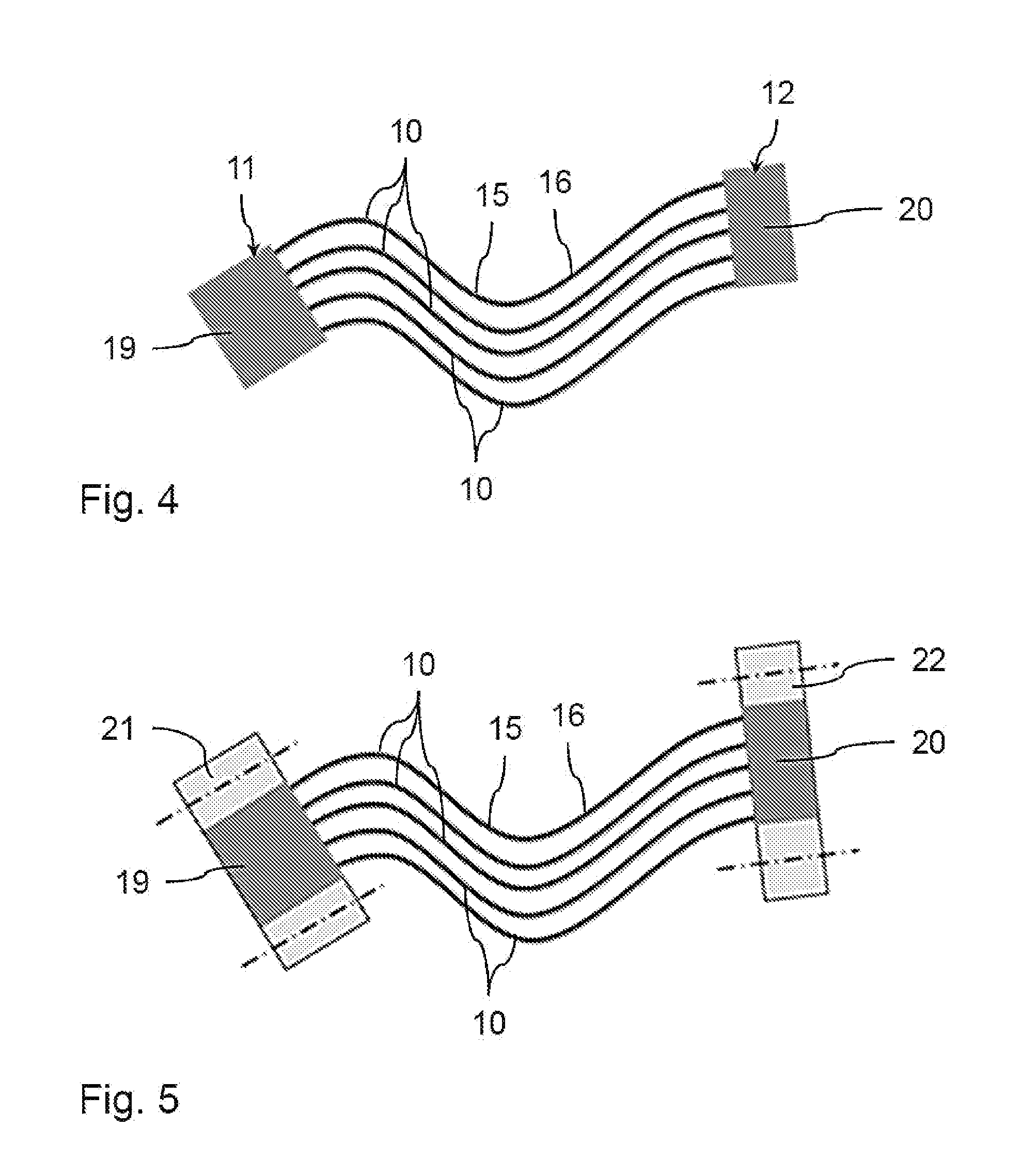Thermal Bridge Element and Method for the Production Thereof
a technology of thermal bridge elements and bridge elements, which is applied in the direction of heat exchange apparatus, coatings, light and heating apparatus, etc., can solve the problems of reduced specific weight in relation to conductivity, difficult production of thermal bridge elements, and disadvantages of higher weights resulting from thermal bridge elements, so as to reduce the risk of carbon fiber damage caused by the force introduced by the connector element, the effect of reducing the risk of carbon fiber damag
- Summary
- Abstract
- Description
- Claims
- Application Information
AI Technical Summary
Benefits of technology
Problems solved by technology
Method used
Image
Examples
Embodiment Construction
[0035]It is necessary in the thermal layout of space flight components, like space flight instruments or satellites, for example, to provide thermal connections, which allow the heat flow between various points of the space flight component. This avoids overheating or undercooling of structure and individual components. At present, such thermal connections are made with solid or flexible component elements of conventional highly heat-conductive materials, like aluminum or copper. Copper has a heat conductivity that is more than twice as high as that of aluminum, however, the density of copper is more than three times the density of aluminum. All in all, there is a somewhat better ratio of density to heat conductivity for aluminum (p / αalu=17.3 kgK / Wm2 and p / αcopper=22.2 kgK / Wm2).
[0036]Flexible thermal bridge elements are produced as multi-layered strips of metal foil, for example. They are flexible about an axis and have a sufficiently large cross-sectional surface in order to ensure...
PUM
| Property | Measurement | Unit |
|---|---|---|
| Thickness | aaaaa | aaaaa |
| Thickness | aaaaa | aaaaa |
| Thickness | aaaaa | aaaaa |
Abstract
Description
Claims
Application Information
 Login to View More
Login to View More - R&D
- Intellectual Property
- Life Sciences
- Materials
- Tech Scout
- Unparalleled Data Quality
- Higher Quality Content
- 60% Fewer Hallucinations
Browse by: Latest US Patents, China's latest patents, Technical Efficacy Thesaurus, Application Domain, Technology Topic, Popular Technical Reports.
© 2025 PatSnap. All rights reserved.Legal|Privacy policy|Modern Slavery Act Transparency Statement|Sitemap|About US| Contact US: help@patsnap.com



